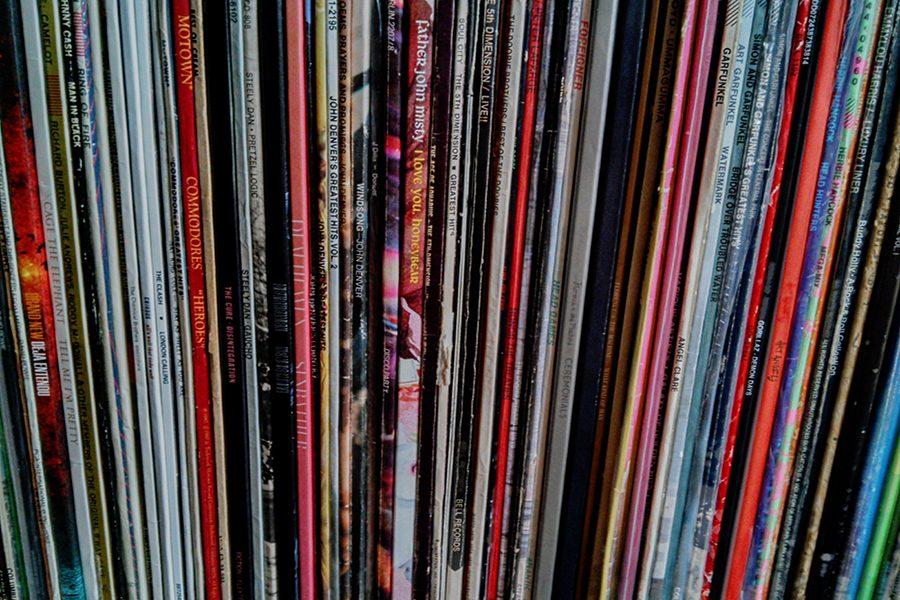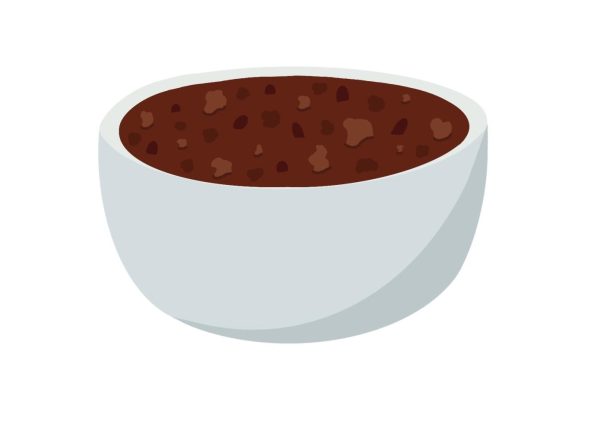Records spin into the future
Vinyl records have made a rapid return into popular culture. With record sales increasing, and more young people engaging in the method of listening, analogue technology appears to be the way of the future.
Over the past few years, vinyl records have come back in a big way. According to Newsweek, vinyl record sales have grown over 50% since 2014, reaching levels not seen since the late 1990s. Whether it is teenagers or baby boomers rediscovering the hobby, records have become part of popular culture once again.
Fortune Magazine reported that in 2015, vinyl record sales accounted for $416 million. This staggering number was the highest since 1988 and accounted for $16 million more than streaming services such as Spotify and YouTube. Almost 12 million records were sold in 2015 alone, and the upward trend of sales seems to be continuing into 2016.
According to Musicwatch, a company that studies music trends, statistics have shown that nearly half of vinyl consumers are under the age of 25. In other words, young buyers, who are often decades removed from vinyl’s heyday, are being drawn to the hobby. Why is there a newfound fascination for records due to the fact that there are more efficient, cost-effective, and modern alternatives for listening to music?
A variety of factors have accounted for the return of vinyl. Records serve as a link to the past and offer a completely different listening experience than CDs or digital files. The ritual of removing the record from the sleeve and dropping the needle, as well as experiencing a full album, is appealing to many young listeners.
Senior Erin McCaughey is one of these people. “I started to collect vinyl when I found my aunt’s old collection while I was helping her clean out her closet. Now I collect [them] because I like the way that vinyl sounds.”
McCaughey went on to say, “Even though some people don’t like vinyl because they say that there is surface noise, I think the opposite. To me, the surface noise makes the song seem more real, maybe even warm, like you can visualize the band in the studio recording it.”
Junior Mark Bateson commented on the sound quality of vinyl by saying, “Records do have a certain difference in sound quality from MP3. While MP3s do generally have good sound quality, they lack the presence and ‘ump’ that records do. Records also tend to have crispier and higher quality sounds, which means you can often hear certain sounds that on MP3 would be lost in the mix.” Other than the difference in sound quality, records force the listener to experience an entire album and not skip tracks as streaming has made commonplace.
Junior Matthew Foulk commented on the inability to skip positively. “You are stuck. I listened to all of Fleetwood Mac and couldn’t just skip to Billy Joel as I could on Spotify,” Foulk said. He expressed that listening to an entire album made for a different interaction with the music.
Erin McCaughey agreed by saying, “I like the way that listening to album all at once brings a different feeling than listening to songs individually.”
Listeners are also drawn to records due to their enlarged cover art and easily accessible credits and liner notes. Information about the recording process, lyrics, and additional art are all commonplace features of record packaging.
“Actually being able to see the year albums came out and who was involved with the writing/composition of the songs is very interesting. I love seeing the photos that accompany the records, such as the ones on the ‘Layla’ album by Derek and the Dominos,” senior Kathleen Pelosi said.
“I’ve always felt that there is a certain authenticity in owning a record in that you actually own and hold the music…I love the cover art and inner sleeves and how cool they can look,” junior Mark Bateson stated.
The vinyl resurgence has boosted record sales and has even brought records into large retailers such as Barnes and Noble and Urban Outfitters, but there are still many challenges within the industry. There have been no advances in record production since the late 1970s, and with the near death of the industry in the early 2000s, meeting the recent demand has been a challenge.
Very few record presses still exist today, and due to their age, working them to capacity runs as a risk because repairs are costly and extremely difficult due to the limited number of parts. There are only 20 record pressing plants in the entire U.S. to meet the current demand. Bigger budget mainstream labels are also trying to regain control of the medium, and it is causing indie artists and others to struggle to have their physical music released now more than ever.
An example of this was cited by Pitchfork, who interviewed John Beeler. Beeler is the project manager of the indie label Asthmatic Kitty, whose most notable artist is Sufjan Stevens.
“You used to be able to turn over a record in four weeks, But I’m now telling my artists that we need at least three months from the time they turn it in to the time we get it back,” Beeler said.
Mike Park, the owner and operator of indie label Asian Man Records, was interviewed by Noisey and expressed his similar concerns.
“We’ve been out of stock of vinyl while our bands have been on tour, and they rely on selling product to make ends meet. It’s soul crushing to not be able to provide this for them,” Park said..
Records serve as a connection between the past and present, and many are discovering a cornerstone of their parents’ and grandparents’ youth firsthand. Vinyl records are uniting the young and the old as part of a universal passion for music.
Edward Benner is News Editor for The Patriot and jcpatriot.com.





